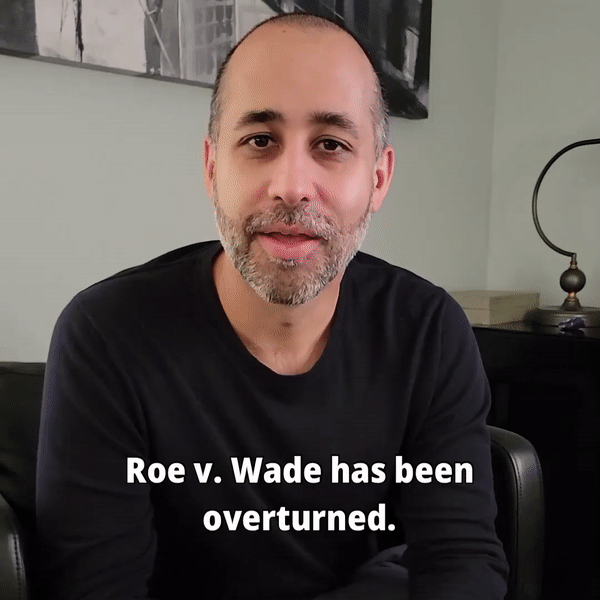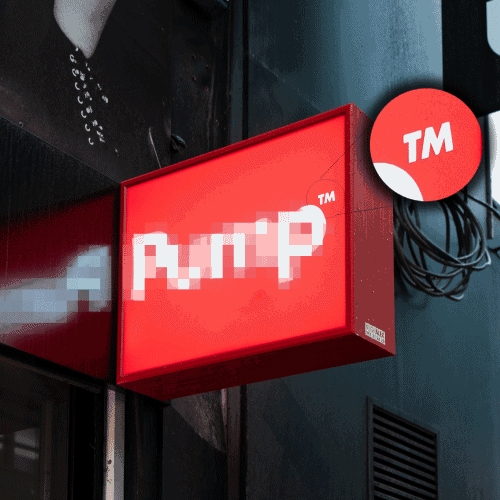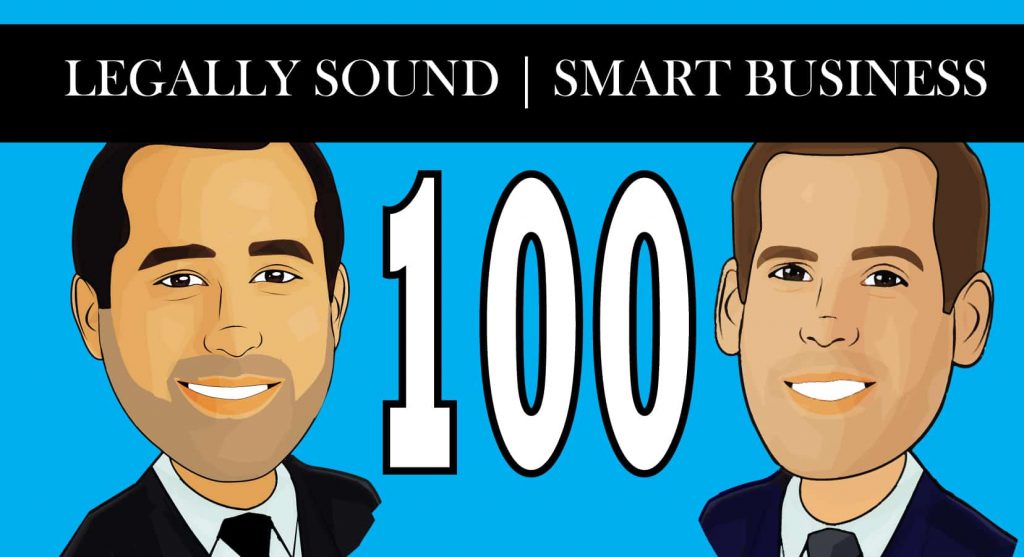On Saturday, June 28, 2014, Aereo suspended operations after the Supreme Court ruled that it had violated copyright law by capturing broadcast signals on tiny antennas and delivering them to subscribers for a fee. Most agree that it’s gone.
The arguments on both sides were plenty strange from the beginning. Was Aereo like a cable company? Was it a farm of rabbit ears, a copy shop with a library card or a valet parking service? Is the cloud a storage locker? Is the elephant more like a tree or a snake? Major headspin. The Supreme Court went with the cable company analogy. But now that it’s over, a question remains. Is there anything in Aereo’s argument that can be used by other disruptive businesses to exempt them from regulatory schemes arguably designed to protect existing business interests?
What is Disruptive Innovation?
Disruptive businesses are generally defined as those that succeed by creating new markets and value networks, and in the process upend existing ones. Who is disruptive? Aereo was named as one of the top twelve last year. Facebook, Twitter, Pinterest, Airbnb and Uber frequently make the list. What challenges do disruptive businesses face? Making money is one, of course, but as recent news makes clear, litigation is another cost of disruption.
ABC argued that Aereo violated the Transmit Clause of the Copyright Act of 1976 and threatened the billions of dollars ABC receives from cable and satellite companies for the right to retransmit their programming. The network argued that Aereo was like a cable company and should pay the same fees. Airbnb recently faced a challenge in New York State, where the State Attorney General argued that Airbnb hosts were like hoteliers and should so pay the hotel tax. In Dallas, the City Council recently moved to regulate Uber cars like other taxis and limousines. Commentators have suggested that Pinterest may, like Aereo, be violating the Copyright Act, but this time because of Pinterest’s foot-dragging on requests to take down material on objections made under the Digital Millennium Copyright Act, or DMCA.
The Common Thread
In each of these situations, either the regulator, or the plaintiff claiming the benefits of regulation, has argued that the disruptive business is like an existing business or industry, and so should have to comply with the same rules. The upstart, rather than arguing about the merits of the regulation, has argued about the strength of the analogy. A is not equal to B. This is where the head explodes. Aging lawyers eschew head explosions.
But the really headstrong want to know more. Is there something to the argument that disruptive businesses like Aereo, Airbnb, Uber and Pinterest really are different? Each has taken the position (or in the case of Pinterest, might do so) that the product being sold is not the ride, the room, the TV show or the picture, but the method of accessing it. It’s the difference between selling doors and selling the opportunity to step into a space that becomes available when the door swings open.
Aereo argued that it simply supplied the equipment (dime-sized antennas) that allowed subscribers to access the “public performance” of broadcast TV shows. Uber argued that it is a tech company that just makes it easier for drivers and passengers to connect. Pinterest might argue that it is a transformative search tool that simply drives traffic to original sources, the digital equivalent of an index.
So, far, this argument has not worked, and we may be approaching a decision point about whether this position is admirably tenacious or a symptom of mental illness. Perhaps the way to answer the question is to look at the next looming challenge.
Implications for Businesses that Depend on Cloud Computing
This was a worry raised in Aereo’s oral argument. Cloud computing is expected to create nearly 14 million jobs globally and $1.1 trillion a year in revenues by 2015. Since we are reasoning by analogy, could owners of copyrights now argue that cloud storage providers are like Aereo? In his dissent, Justice Antonin Scalia makes the slippery slope argument. (How are Supreme Court Justices like skiers?)
Inapt analogies seem to be a big part of the problem. Clearly, if businesses based on innovative technology want to make the argument that they are very different from existing businesses and so should be regulated differently, they have to do a better job of explaining the technology. Some of the Court’s language about the “iDrop in the cloud,” is truly cringe-worthy, but you can’t blame them. Supreme Court Justices are smart people. They like to learn things.
More to the point, however, why have disruptive businesses gotten lost in a thicket of analogy? Perhaps it is time to tackle the problem head on and discuss the substance of the regulation — not the fact of regulation, but the balance of interests.
Access to information, art and entertainment is a social good. So is getting paid for producing these things. There is no point in pitting the interests of the producer against the interests of the audience. There is a natural alliance between the two. Creators make things in order to share them for a fair price. If disruptive businesses want to do more than flame out in spectacular fashion, they may need to focus their arguments on the way in which current regulatory schemes, whether copyright law or taxi and limousine regulation or hotel regulation, distort the relationship. That could be a heavy lift.

![Vaccine Mandates Supreme Court Rulings [E317]](https://www.pashalaw.com/wp-content/uploads/2022/02/WhatsApp-Image-2022-02-11-at-4.10.32-PM-1024x723.jpeg)

![Airbnb’s Discrimination Problem and How Businesses Can Relate [e279]](https://www.pashalaw.com/wp-content/uploads/2016/09/airbnb-1024x543.jpg)

![Even After Winning Lawsuits Company Must File for Bankruptcy [e123] Even After Winning Lawsuits Company Must File for Bankruptcy](https://www.pashalaw.com/wp-content/uploads/2014/11/Even-After-Winning-Lawsuits-Company-Must-File-for-Bankruptcy.jpg)

![The Supreme Court Knows Nothing About Technology [e76] THE SUPREME COURT KNOWS NOTHING ABOUT TECHNOLOGY](https://www.pashalaw.com/wp-content/uploads/2014/08/THE-SUPREME-COURT-KNOWS-NOTHING-ABOUT-TECHNOLOGY.jpg)
![Scamming Your Way to Free Rent Through Airbnb [e73]](https://www.pashalaw.com/wp-content/uploads/2014/07/iStock_000039009222Small.jpg)






![Law in the Digital Age: Exploring the Legal Intricacies of Artificial Intelligence [e323]](https://www.pashalaw.com/wp-content/uploads/2023/11/WhatsApp-Image-2023-11-21-at-13.24.49_4a326c9e-300x212.jpg)
![Unraveling the Workforce: Navigating the Aftermath of Mass Layoffs [e322]](https://www.pashalaw.com/wp-content/uploads/2023/07/Untitled-design-23-300x212.png)
![Return to the Office vs. Remote: What Can Employers Legally Enforce? [e321]](https://www.pashalaw.com/wp-content/uploads/2023/01/Pasha_LSSB_321_banner-300x212.jpg)
![Explaining the Hans Niemann Chess Lawsuit v. Magnus Carlsen [e320]](https://www.pashalaw.com/wp-content/uploads/2022/10/LAWYER-EXPLAINS-7-300x169.png)
![California v. Texas: Which is Better for Business? [313]](https://www.pashalaw.com/wp-content/uploads/2021/07/Pasha_LSSB_CaliforniaVSTexas-300x212.jpg)
![Buyers vs. Sellers: Negotiating Mergers & Acquisitions [e319]](https://www.pashalaw.com/wp-content/uploads/2022/06/Pasha_LSSB_BuyersVsSellers_banner-300x212.jpg)
![Employers vs. Employees: When Are Employment Restrictions Fair? [e318]](https://www.pashalaw.com/wp-content/uploads/2022/05/Pasha_LSSB_EmployeesVsEmployers_banner-1-300x212.jpg)
![Vaccine Mandates Supreme Court Rulings [E317]](https://www.pashalaw.com/wp-content/uploads/2022/02/WhatsApp-Image-2022-02-11-at-4.10.32-PM-300x212.jpeg)
![Business of Healthcare [e316]](https://www.pashalaw.com/wp-content/uploads/2021/11/Pasha_LSSB_BusinessofHealthcare_banner-300x212.jpg)
![Social Media and the Law [e315]](https://www.pashalaw.com/wp-content/uploads/2021/10/WhatsApp-Image-2021-10-06-at-1.43.08-PM-300x212.jpeg)
![Defining NDA Boundaries: When does it go too far? [e314]](https://www.pashalaw.com/wp-content/uploads/2021/09/Pasha_LSSB_NDA_WordPress-2-300x212.jpg)
![More Than a Mistake: Business Blunders to Avoid [312] Top Five Business Blunders](https://www.pashalaw.com/wp-content/uploads/2021/06/Pasha_LSSB_Blunders_WP-1-300x212.jpg)
![Is There a Right Way to Fire an Employee? We Ask the Experts [311]](https://www.pashalaw.com/wp-content/uploads/2021/02/Pasha_LSSB_FireAnEmployee_Website-300x200.jpg)
![The New Frontier: Navigating Business Law During a Pandemic [310]](https://www.pashalaw.com/wp-content/uploads/2020/12/Pasha_LSSB_Epidsode308_Covid_Web-1-300x200.jpg)
![Wrap Up | Behind the Buy [8/8] [309]](https://www.pashalaw.com/wp-content/uploads/2020/11/Pasha_BehindTheBuy_Episode8-300x200.jpg)
![Is it all over? | Behind the Buy [7/8] [308]](https://www.pashalaw.com/wp-content/uploads/2020/09/iStock-1153248856-overlay-scaled-300x200.jpg)
![Fight for Your [Trademark] Rights | Behind the Buy [6/8] [307]](https://www.pashalaw.com/wp-content/uploads/2020/07/Fight-for-your-trademark-right-300x200.jpg)
![They Let It Slip | Behind the Buy [5/8] [306]](https://www.pashalaw.com/wp-content/uploads/2020/06/Behind-the-buy-they-let-it-slip-300x200.jpg)
![Mo’ Investigation Mo’ Problems | Behind the Buy [4/8] [305]](https://www.pashalaw.com/wp-content/uploads/2020/05/interrobang-1-scaled-300x200.jpg)
![Broker or Joker | Behind the Buy [3/8] [304] Behind the buy - Broker or Joker](https://www.pashalaw.com/wp-content/uploads/2020/04/Joker-or-Broker-1-300x185.jpg)
![Intentions Are Nothing Without a Signature | Behind the Buy [2/8] [303]](https://www.pashalaw.com/wp-content/uploads/2020/04/intentions-are-nothing-without-a-signature-300x185.jpg)
![From First Steps to Final Signatures | Behind the Buy [1/8] [302]](https://www.pashalaw.com/wp-content/uploads/2020/04/first-steps-to-final-signatures-300x185.jpg)
![The Dark-side of GrubHub’s (and others’) Relationship with Restaurants [e301]](https://www.pashalaw.com/wp-content/uploads/2015/04/When-Competition-Goes-Too-Far-Ice-Cream-Truck-Edition-300x201.jpg)
![Ultimate Legal Breakdown of Internet Law & the Subscription Business Model [e300]](https://www.pashalaw.com/wp-content/uploads/2019/05/Ultimate-Legal-Breakdown-of-Internet-Law-the-Subscription-Business-Model-300x196.jpg)
![Why the Business Buying Process is Like a Wedding?: A Legal Guide [e299]](https://www.pashalaw.com/wp-content/uploads/2019/03/futura-300x169.jpg)
![Will Crowdfunding and General Solicitation Change How Companies Raise Capital? [e298]](https://www.pashalaw.com/wp-content/uploads/2018/11/Will-Crowdfunding-and-General-Solicitation-Change-How-Companies-Raise-Capital-300x159.jpg)
![Pirates, Pilots, and Passwords: Flight Sim Labs Navigates Legal Issues (w/ Marc Hoag as Guest) [e297]](https://www.pashalaw.com/wp-content/uploads/2018/07/flight-sim-labs-300x159.jpg)
![Facebook, Zuckerberg, and the Data Privacy Dilemma [e296] User data, data breach photo by Pete Souza)](https://www.pashalaw.com/wp-content/uploads/2018/04/data-300x159.jpg)
![What To Do When Your Business Is Raided By ICE [e295] I.C.E Raids business](https://www.pashalaw.com/wp-content/uploads/2018/02/ice-cover-300x159.jpg)
![General Contractors & Subcontractors in California – What you need to know [e294]](https://www.pashalaw.com/wp-content/uploads/2018/01/iStock-666960952-300x200.jpg)
![Mattress Giants v. Sleepoplis: The War On Getting You To Bed [e293]](https://www.pashalaw.com/wp-content/uploads/2017/12/sleepopolis-300x159.jpg)
![The Harassment Watershed [e292]](https://www.pashalaw.com/wp-content/uploads/2017/12/me-2-300x219.jpg)
![Investing and Immigrating to the United States: The EB-5 Green Card [e291]](https://www.pashalaw.com/wp-content/uploads/2012/12/eb-5-investment-visa-program-300x159.jpg)
![Responding to a Government Requests (Inquiries, Warrants, etc.) [e290] How to respond to government requests, inquiries, warrants and investigation](https://www.pashalaw.com/wp-content/uploads/2017/10/iStock_57303576_LARGE-300x200.jpg)
![Ultimate Legal Breakdown: Employee Dress Codes [e289]](https://www.pashalaw.com/wp-content/uploads/2017/08/Ultimate-Legal-Breakdown-Template-1-300x159.jpg)
![Ultimate Legal Breakdown: Negative Online Reviews [e288]](https://www.pashalaw.com/wp-content/uploads/2017/06/Ultimate-Legal-Breakdown-Online-Reviews-1-300x159.jpg)
![Ultimate Legal Breakdown: Social Media Marketing [e287]](https://www.pashalaw.com/wp-content/uploads/2017/06/ultimate-legal-breakdown-social-media-marketing-blur-300x159.jpg)
![Ultimate Legal Breakdown: Subscription Box Businesses [e286]](https://www.pashalaw.com/wp-content/uploads/2017/03/ultimate-legal-breakdown-subscription-box-services-pasha-law-2-300x159.jpg)
![Can Companies Protect Against Foreseeable Misuse of Apps [e285]](https://www.pashalaw.com/wp-content/uploads/2017/01/iStock-505291242-300x176.jpg)
![When Using Celebrity Deaths for Brand Promotion Crosses the Line [e284]](https://www.pashalaw.com/wp-content/uploads/2017/01/celbrity-300x159.png)
![Are Employers Liable When Employees Are Accused of Racism? [e283] Racist Employee](https://www.pashalaw.com/wp-content/uploads/2016/12/Are-employers-liable-when-an-employees-are-accused-of-racism-300x159.jpg)
![How Businesses Should Handle Unpaid Bills from Clients [e282] What to do when a client won't pay.](https://www.pashalaw.com/wp-content/uploads/2016/12/How-Businesses-Should-Handle-Unpaid-Bills-to-Clients-300x159.png)
![Can Employers Implement English Only Policies Without Discriminating? [e281]](https://www.pashalaw.com/wp-content/uploads/2016/11/Can-Employers-Impliment-English-Only-Policies-Without-Discriminating-300x159.jpg)
![Why You May No Longer See Actors’ Ages on Their IMDB Page [e280]](https://www.pashalaw.com/wp-content/uploads/2016/10/IMDB-AGE2-300x159.jpg)
![Airbnb’s Discrimination Problem and How Businesses Can Relate [e279]](https://www.pashalaw.com/wp-content/uploads/2016/09/airbnb-300x159.jpg)
![What To Do When Your Amazon Account Gets Suspended [e278]](https://www.pashalaw.com/wp-content/uploads/2016/09/What-To-Do-When-Your-Amazon-Account-Gets-Suspended-1-300x200.jpg)
![How Independent Artists Reacted to Fashion Mogul Zara’s Alleged Infringement [e277]](https://www.pashalaw.com/wp-content/uploads/2016/08/How-Independent-Artists-Reacted-to-Fashion-Mogul-Zaras-Alleged-Infringement--300x159.jpg)
![Can Brave’s Ad Replacing Software Defeat Newspapers and Copyright Law? [e276]](https://www.pashalaw.com/wp-content/uploads/2016/08/Can-Braves-Ad-Replacing-Software-Defeat-Newspapers-and-Copyright-Law-300x159.jpg)
![Why The Roger Ailes Sexual Harassment Lawsuit Is Far From Normal [e275]](https://www.pashalaw.com/wp-content/uploads/2016/07/WHY-THE-ROGER-AILES-SEXUAL-HARASSMENT-LAWSUIT-IS-FAR-FROM-NORMAL-300x159.jpeg)
![How Starbucks Turned Coveted Employer to Employee Complaints [e274]](https://www.pashalaw.com/wp-content/uploads/2016/07/iStock_54169990_LARGE-300x210.jpg)
